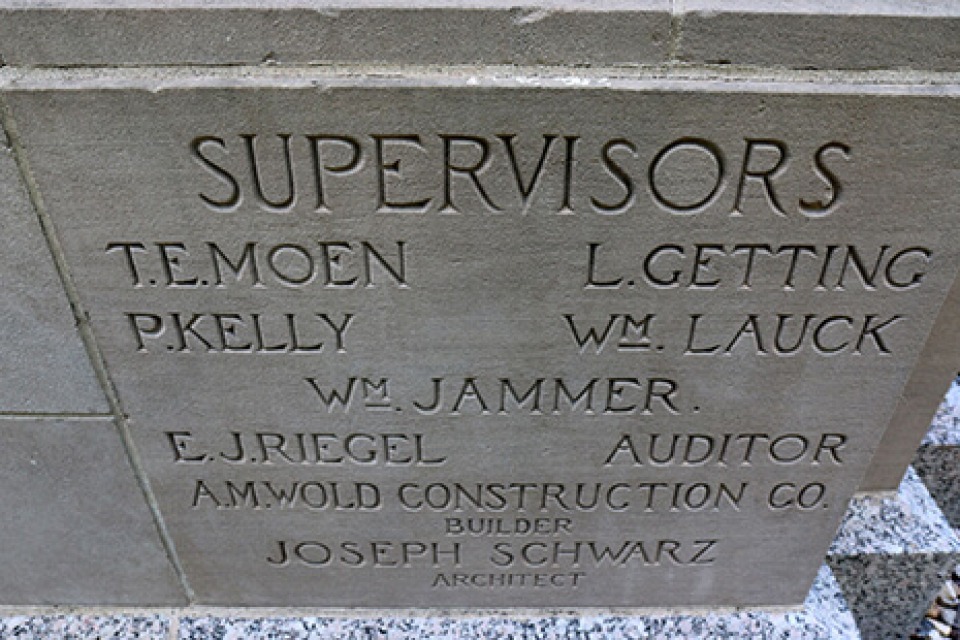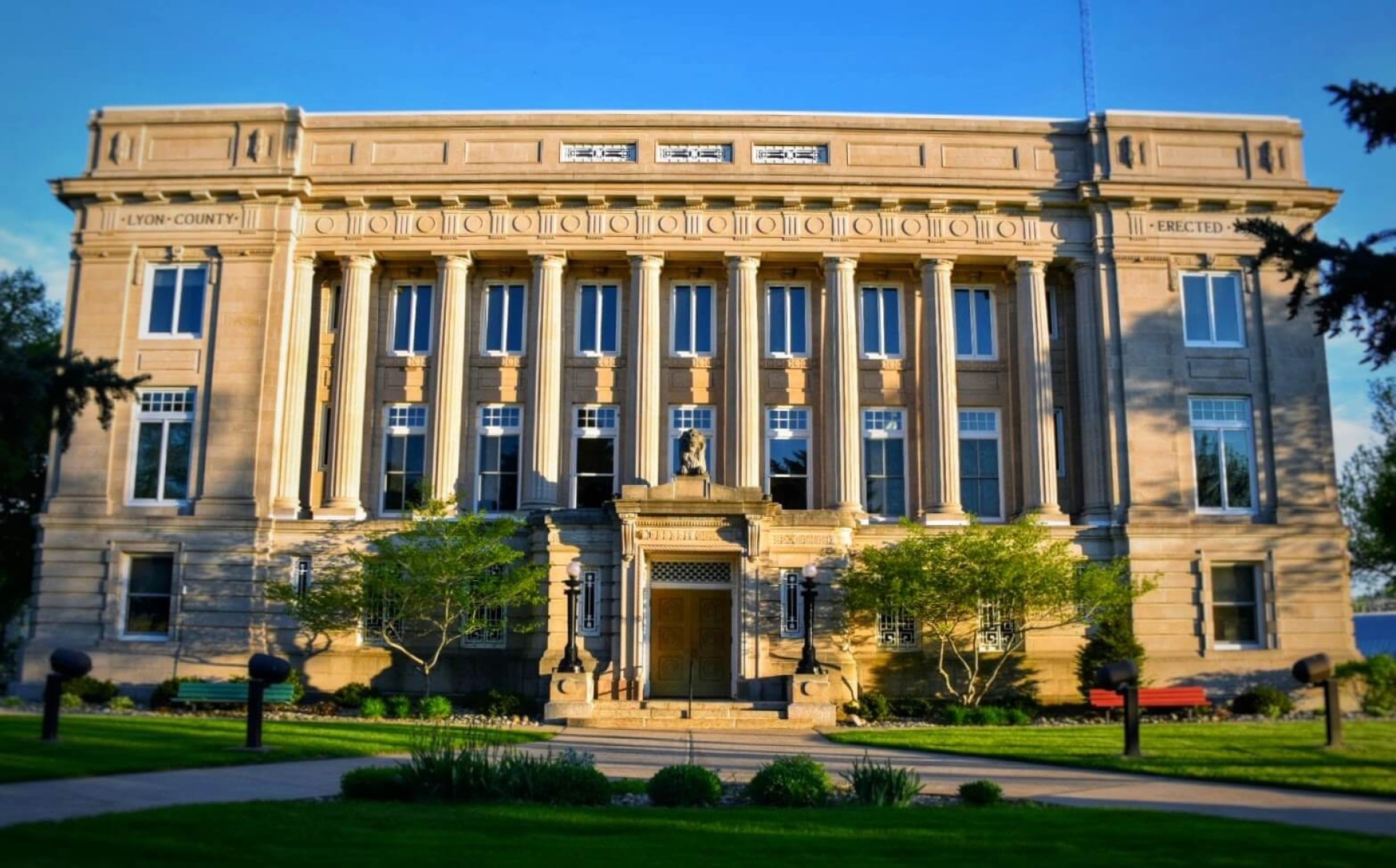About Lyon County, Iowa
Lyon County History
The land that makes up Lyon County was ceded to the federal government by the Sioux Indians through a treaty signed on July 23, 1851. The boundaries of the county were set on January 15, 1851 and attached to Woodbury County (then called Wahkaw County) for administration purposes. Lyon County officially split from Woodbury County on January 1, 1872.
The first white man to live in Lyon County was Daniel McLaren, known as "Uncle Dan". He lived near the Sioux River for a short time, spending his time hunting and trapping. He moved out of the county very early in its settlement to stake a claim further west. The second settler in the area was known as "Old Tom", a hunter and trapper who lived briefly near present-day Rock Rapids. While setting his traps, Old Tom was killed by Sioux Indians.
In 1862–1863, a group of men from the east coast spent time in the county on a hunting trip. They were: Roy McGregor, George Clark and Thomas Lockhart. During the winter, Lockhart and McGregor were hunting elk along the Little Rock creek and encountered a group of Sioux Indians. Lockhart was killed by an arrow, but McGregor was able to escape and rejoin Clark. The two continued to hunt and trap until March 1863. During a spring flood, Clark was drowned and McGregor decided to move back east.
The first permanent settlement in Lyon County was built by Lewis P. Hyde in July 1866. The county's population reached 100 persons in 1869, entirely through migration and settlement. The first white child born in the county was Odena Lee, born on May 28, 1871. The first election in the county was held on October 10, 1871, and recorded 97 votes.
Excerpts from "From Buncombe to Twenty-Two" (c) 1975 Lyon County Reporter
The big issue as to the location of the county seat came to a head in February of 1873. District Judge Ford named three commissioners, who were to consider the matter and make the decision, as to where the new county seat would be located.
Here is the report of the final consideration of the matter and the reaching of a decision that ultimately made Rock Rapids the "big" town in the county and meant the gradual demise of Beloit.
"D. L. Riley, B. F. McCormick, and Mark Burket, the commissioners appointed by Judge Ford for locating the County Seat of Lyon County, came forth last Tuesday and took dinner at the Hotel. The importance of their meeting was surrounded by no little curiosity, while local interest, party strife, and other hindrances caused some profound thinking, developed many faces to a prodigious length, and others into a still bold expression of doubt. The bar-room became packed to its utmost capacity with the anxious waiters.
The legal custodians then retired to a private room for the purpose of examining the county map. Meanwhile an occasional smile, elongated countenances, terrible scowls, with hats occasionally pointing upward from the effect of the hair on their heads standing upon ends, then an unpleasant rush toward the door, all served to make up a marvelous show, or a grand picture of mental derangement. They came to a definite conclusion in regard to its location, after having compared distances, determined all natural advantages, discussed points respecting future development of the county, considered the extent of every settlement in certain portions thereof, and regarded what they believed to be the best interests of all concerned."

"We are of the opinion that it would be a hard matter to select three disinterested persons from other counties, that would have decided differently; no three unbiased or unprejudiced persons could pass over the natural advantages of this place in the selection of a county seat. There has been no formidable opposition in regard to the matter, except a determination of some men to beat Rock Rapids at all hazards, but the judgement of the Commission was expressed without the interposition of any selfish motives, or the swerving influences of men who are willing to ruin others if they cannot profit themselves."
Easily the major news of 1915 was work towards a new courthouse. Joseph Schwartz submitted preliminary plans for the courthouse at the May 1915 meeting of the board of supervisors. They called for a building 68' x 108'. There would be three stories above the ground and only sufficient basement to house the heating plant and provide storage for coal. The winning bid for constructing the new courthouse was provided by A. M. Wold Construction Co. of Brookings, SD at $107,300.00.
July 6, 1917 the new courthouse was dedicated. There was a huge crowd on hand for the occasions. Patriotic societies had part in the program and Supreme Court Judge Gaynor was speaker of the day. S. D. Riniker was chairman for the day — and throughout his remarks he stressed that we were now at war, that is was time for ending all division between our people -- and that we march forward as a united people to victory.


